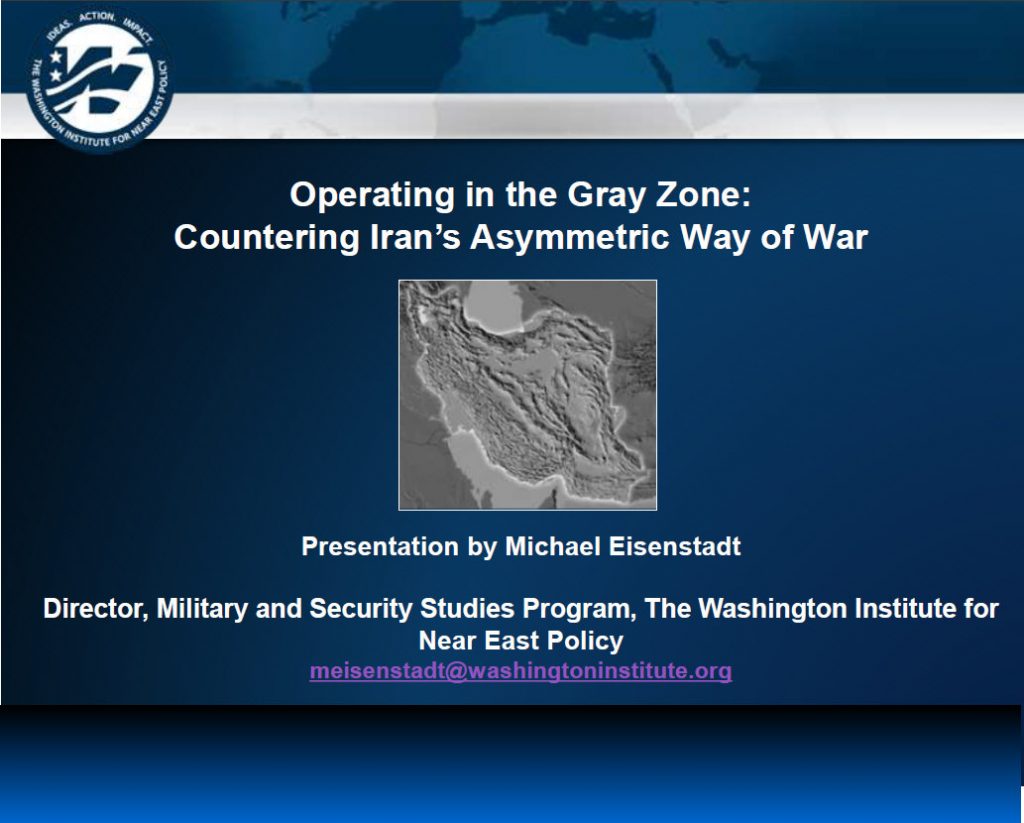
Postcast and downloadable reports
For forty years, Iran has operated in the gray zone between war and peace to manage risk, prevent escalation, and avoid war. To do so, it leverages asymmetries to achieve disproportionate effects, and employs its hybrid force structure for maximum effect. The current U.S. approach, military analyst Michael Eisenstadt explains in the latest episode of the Middle East PolicyCast podcast, is based on overt action, blunt force, and emphatic messaging, all of which entail a heightened potential for escalation. But an alternative gray zone approach—one focused on covert or unacknowledged activities, indirection, subtlety, and discreet messaging—could more effectively deter Iran while reducing the risk of further escalation.
Michael Eisenstadt is Kahn Fellow and director of the Military and Security Studies Program at The Washington Institute. He is the author of the recently published study, Operating in the Gray Zone: Countering Iran’s Asymmetric Way of War.




